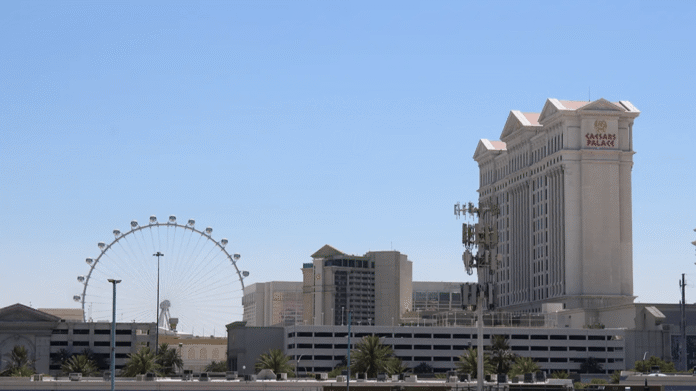Las Vegas and the Quest for Major League Baseball
Las Vegas is buzzing with excitement as it aims to bring Major League Baseball to the glittering strip, but with a twist that only this vibrant city could envision: the development of a state-of-the-art 35-acre casino resort adjacent to the new baseball stadium. The atmosphere is electric, but as plans unfold, a pressing question looms large: who will foot the bill for this ambitious project?
The Vision: A Casino Resort and Athletic Stadium
Situated along Las Vegas Boulevard, the proposed casino resort, spearheaded by Bally’s Corp., seeks to transform the site of the historic, mob-era Tropicana casino. Conceptually, the resort would encircle the new stadium for the Oakland Athletics, featuring two towering hotels housing 3,000 rooms, a separate entertainment venue capable of welcoming 2,500 guests, and a diverse array of retail and dining experiences. This grand vision encompasses a 26-acre casino resort sharing the expansive 35-acre footprint with the Athletics’ new facility.
Current Status of the Project
Despite the grand designs and promises, the project remains in a conceptual phase. A groundbreaking event held in June gave the impression that the stadium was a sure thing; however, substantial details are still murky. Construction has yet to commence, and financial backing remains a critical issue.
Funding the Ambition
To date, $380 million in tax revenues from Clark County is earmarked for this mammoth undertaking. Meanwhile, Athletics owner John Fisher is attempting to sell his MLS team, the San Jose Earthquakes, for a staggering $600 million, funds he aims to channel into the Las Vegas stadium project. This financial juggling act leaves a massive $1 billion gap—half of the project’s anticipated costs—while the completion date is eyed for 2028. Despite Fisher’s impressive net worth of approximately $3 billion, he has not committed to injecting any of his personal wealth into the stadium’s construction.
Construction Progress and Permits
Despite these financial uncertainties, the Athletics have managed to maintain enthusiasm around the project by continuously securing construction permits. Recently, they applied for over $523 million in permits, culminating in a total exceeding $900 million. This steady rhythm of applications keeps hope alive for locals and baseball fans alike.
Bally’s Role in the Development
Amid uncertainties about the stadium’s budget and timeline, Bally’s plans inject a certain allure into the proposed development. The Chairman of Bally’s, Soo Kim, believes this project represents a once-in-a-generation chance to redefine the very essence of the Las Vegas Strip. He insists that the resort will go beyond merely integrating gaming; it aims to create a landmark destination that harmonizes sports, entertainment, dining, and hospitality, all within the vibrant backdrop of Las Vegas.
Challenges Facing the Strip
As ambitious as these plans are, they emerge in a climate complicated by low tourism rates and the evolving landscape of online gambling. Recent statistics from the Las Vegas Convention and Visitors Authority reveal a troubling 6.5% drop in visitors since 2024. The city’s resorts are grappling with economic pressures, making the successful execution of grand projects all the more crucial.
Community Sentiment and Skepticism
With hype building around the potential for a baseball stadium, many community members are cautiously optimistic but wary of past failures. They remember high-profile projects that promised monumental change but ultimately floundered. A notable example is former NBA player Jackie Robinson’s attempt to establish a basketball stadium in 2013, which merely highlighted the risks associated with top-heavy entertainment ventures struggling to find their footing in Las Vegas.
Conclusion
As the elements of this multifaceted project unfold, the spotlight remains on Las Vegas residents who are eager to see if their city will indeed welcome MLB while navigating the complexities of funding, construction, and historical lessons learned. For many, this is not just about baseball; it’s a chance to reshape Las Vegas into a dynamic hub of sports and entertainment.
